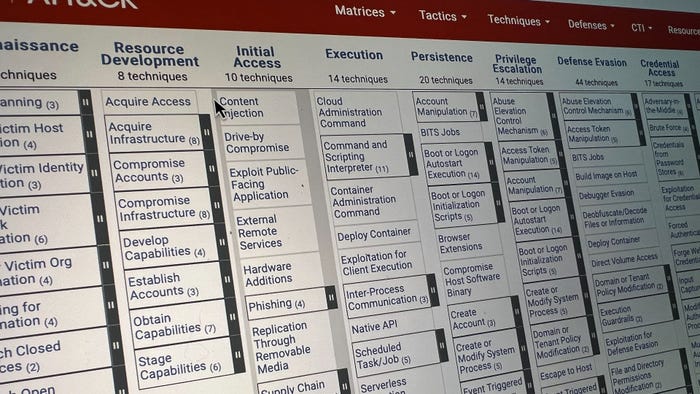Move Over, APTs -- The RAM-Based Advanced Volatile Threat Is Spinning Up FastMove Over, APTs -- The RAM-Based Advanced Volatile Threat Is Spinning Up Fast
By attacking random access memory, AVT creators make their exploits less persistent -- and harder to detect

For security pros, the advanced persistent threat (APT) has become a term as everyday as virus or Trojan horse. But as defenders become increasingly wise to the APT, experts say, attackers are now trying a new approach: the advanced volatile threat (AVT).
An AVT is an attack on random access memory (RAM), rather than stored data or applications, according to John Prisco, CEO of Triumfant, a security vendor that has been studying the trend in recent months and coined the term.
"AVTs are those attacks that target processes running in active memory and therefore are not persistent, as APTs are," Prisco says. "They're attacks on RAM that won't be detected by analyzing stored data or known threats. They are there, and then they're gone when you turn your machine off, sometimes even before you turn your machine off."
There's nothing new about RAM-level hacks -- RAM scraping was flagged by the SANS Institute as one of the industry's most dangerous attacks in 2011 -- but such exploits have been unusual, even rare, in recent years. Triumfant now has data to suggest these attacks are becoming more mainstream.
"We see it mostly in the classified work we do -- government and defense stuff," Prisco says. "But we now see it in as many as 10 percent of the attacks we detect."
Experts attribute the rise in RAM-based attacks to the increasing use of the Web for cyberespionage, where attackers are looking to collect specific data quickly, with a minimum of risk of being caught.
"In-memory attacks, or advanced volatile attacks, are most effective in targeted attacks against a particular organization, where an attacker's goal isn't persistence, but is instead to exfiltrate information from a network," says Joe DeMesy, senior analyst at security consulting firm Stach & Liu.
"The traditional goal of viruses, such as botnets, is to control a system for a long period of time in order to consume a portion of its resources, such as computation or bandwidth. Such a goal requires persistence on disk," DeMesy observes. Such persistent exploits are the hallmark of the APT and characterize sophisticated attacks such as Stuxnet and Flame.
AVTs, on the other hand, are designed to act more like cat burglars, sneaking into the target system for a single theft and escaping without being detected.
"If an attacker only wants to obtain documents from a network drive accessible from a workstation, there is no need to ever write information to disk," DeMesy observes. "I see increasing popularity in advanced volatile attacks related to the rise of corporate espionage."
Mandiant's report earlier this week on the Chinese hacker group APT1 exposed the exploits of sophisticated attackers and backtracked them to their source, Prisco observes. "It showed how lazy the APT developers have become because they didn't think they'd ever get caught. But now, after that report, attackers are going to become a lot more careful and a lot more worried about attribution."
And that concern, Prisco says, could drive more attackers to drop their APT strategies and turn to AVTs instead. "The AVT is going to be attractive to sophisticated attackers because it's there, and it's gone," he says. AVTs take a bit more effort, Prisco observes, because they only work once, but attackers who are highly concerned about attribution will likely be willing to do the extra work.
Using an AVT is no guarantee against detection, DeMesy says. "Detection of advanced volatile attacks is extremely difficult, even when best practices are followed," he says. "However, you may be able to detect what the attackers are trying to do. Internal honeypots are an excellent way to entice attackers to reveal their presence. Attackers employing advanced volatile attacks are looking to get in and out of a network quickly, bringing with them as much information as possible, so seemly vulnerable targets, such as a honeypot, are a prime target."
Prisco says Triumfant's technology has spotted the rise of AVTs because it does active scanning of endpoint devices using onboard agents, rather than scanning networks or stored memory for known malware or suspicious behavior. "Putting an agent on every device is not a trivial task," he concedes, "but in the long run, it's the only way to detect an attack like this while it's still happening."
And you don't have to be a genius to launch an AVT, experts say. DeMesy notes that the industry-standard backdoor Meterpreter, part of the Metasploit framework, operates by default as an in-memory-only backdoor. "There is little to no barrier of entry to perform these types of attacks," he says.
With ready-made templates such as Meterpreter available, will AVTs become a mainstream attack? Prisco thinks so.
"The Mandiant report changes things," he says. "Attackers now know that attribution is possible. They don't want to leave a trail. Today, APTs are the sophisticated exploit of choice, but I think there's a good chance that in the not-too-distant future, things will flip-flop and AVTs will become the norm."
Have a comment on this story? Please click "Add a Comment" below. If you'd like to contact Dark Reading's editors directly, send us a message.
About the Author
You May Also Like
Uncovering Threats to Your Mainframe & How to Keep Host Access Secure
Feb 13, 2025Securing the Remote Workforce
Feb 20, 2025Emerging Technologies and Their Impact on CISO Strategies
Feb 25, 2025How CISOs Navigate the Regulatory and Compliance Maze
Feb 26, 2025Where Does Outsourcing Make Sense for Your Organization?
Feb 27, 2025




